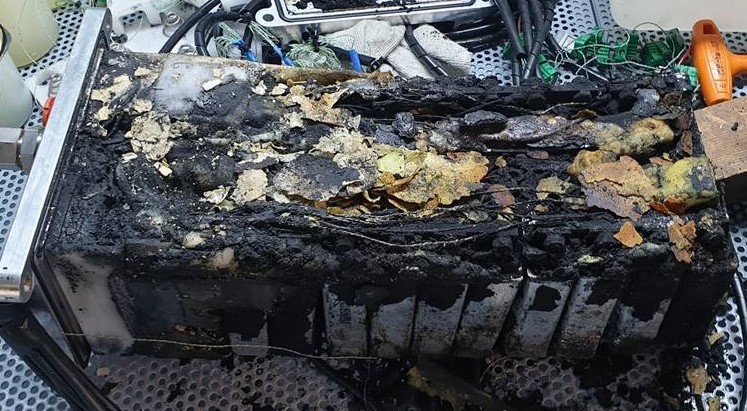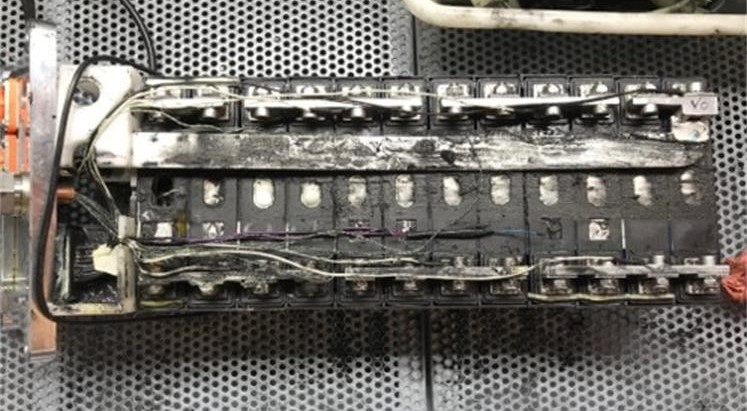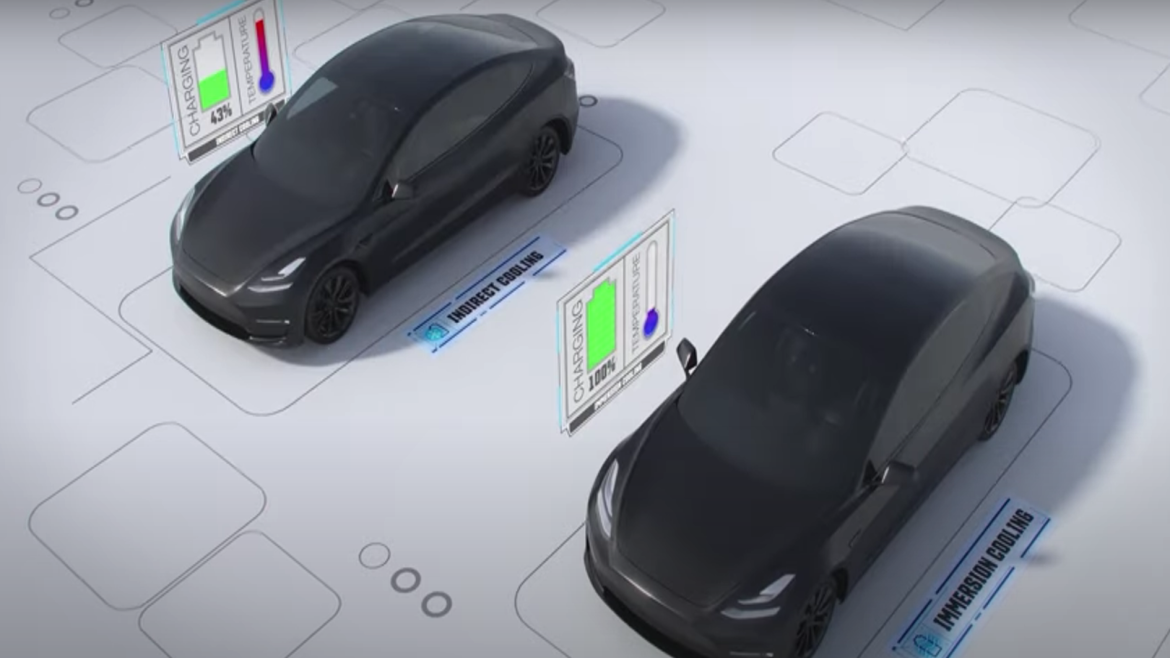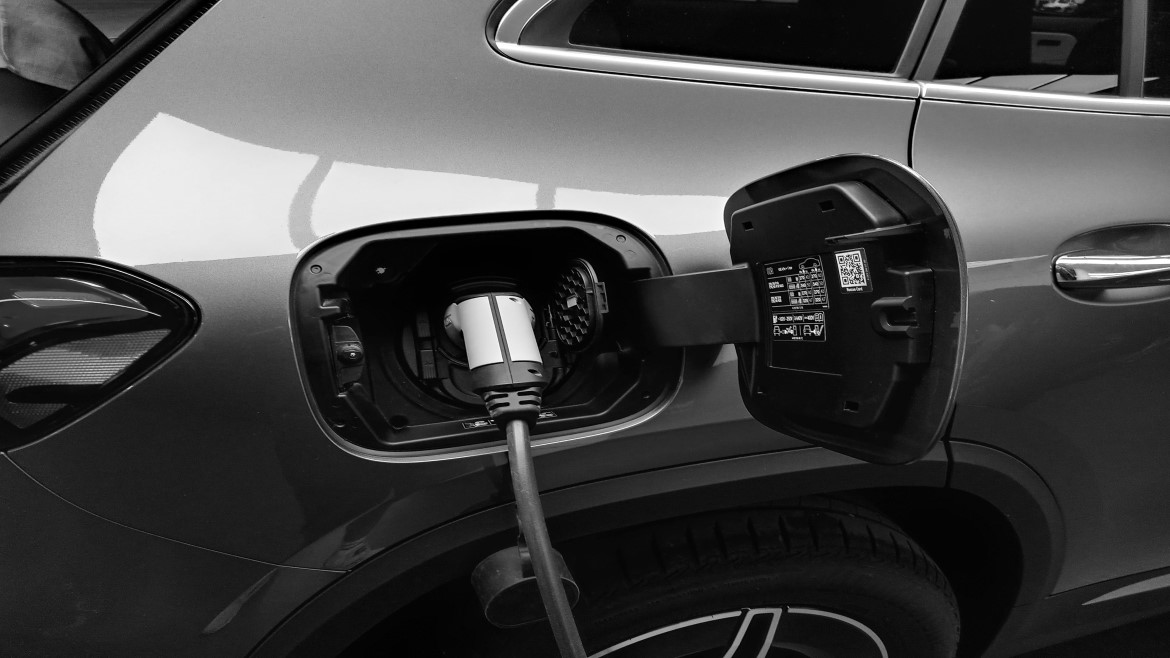Sep 8, 2023
Posted by Andy Richenderfer, Research Engineer
With the increased adoption of battery electric vehicles (BEVs), consumers are more familiar with the benefits that these vehicles provide. However, one problem unique to BEVs is the risk of battery thermal runaway.
Thermal runaway is a safety risk involving the rapid failure and energy release from the battery that can lead to severe fire and explosion. The good news is that fluid immersion is proving to be a viable long-term solution to address this hazard.
In this article, we are going to help explain what occurs during thermal runaway and how fluid immersion helps remedy the problem.
What Is Battery Thermal Runaway?
In modern electric vehicles, the “battery” is actually a careful arrangement of numerous small battery cells, all electrically interconnected. When a battery is either discharging or charging, it generates heat. The faster you charge or drain energy, the more heat is generated.
OEMs recognize the risk of heat generation in a BEV, and so they rely on various methods to cool the battery. A common method is to use a water-glycol mixture that flows through a metal plate or ribbon in close contact to the battery cells. This indirectly keeps the battery cool, much like a radiator in a traditional internal combustion engine vehicle.
Battery thermal runaway occurs when there is damage to the integrity of the battery cell. This can lead to an unintended “short circuit.” The result is a sudden amount of heat, which melts the battery components and generates noxious gases.
There are three common causes of battery thermal runaway:
- Mechanical failures can penetrate the structure of the battery, creating unintended connections between the anode and cathode. A common example is a nail that penetrates the battery.
- Thermal failures can take place when the battery is overcharged, with the resulting heat causing a breakdown of battery components.
- During battery charging, dendrite defects that form from lithium ions reduced to lithium metal protrude from the anode to the cathode, creating the short circuit.
When Thermal Runaway Propagates
The problem with battery thermal runaway is that the damage may extend beyond a single battery cell. Remember—modern BEVs contain numerous battery cells, all carefully packed together. When one cell fails, it heats up the neighboring cells, which quickly causes a chain reaction of thermal runaway events that spreads throughout the battery pack, often leading to sudden explosions and fire.
WATCH: Simulation of nail penetration and a mechanical failure of the battery assembly that is being cooled with a base oil.
Battery thermal runaway poses a major safety hazard for drivers, and the current methods for cooling the battery are not sufficient for suppressing the event once failure of the battery occurs.
Immersion Cooling as a Safer Solution
The industry has identified a safer solution for battery cooling – direct immersion cooling. With this approach, the battery assembly is directly immersed in a dielectric fluid. Dielectric fluids are nonconductive, ensuring that the numerous electrical connections within the battery pack are fully compatible and directly exposed to the fluid.
Learn about Lubrizol’s Evogen™ battery thermal management fluids
Direct immersion effectively suppresses battery thermal runaway. If one battery cell fails, the immersion fluid contains the damage, helping to quickly dissipate the heat generated and avoiding failure in the other battery cells. You can see the difference in comparing the performance to an industry-standard synthetic fluid vs. a battery pack immersed in Lubrizol’s specially formulated dielectric fluid.


In addition to improved safety, direct immersion offers additional performance benefits. Because the fluid is in direct contact with battery surfaces, direct immersion delivers improved cooling performance. This allows for faster charging and better battery performance.
We should expect to see a strong consumer preference for faster charging times as BEVs become increasingly popular, and direct immersion of the battery via a battery thermal management (BTM) fluid offers an intriguing solution for meeting this demand.
The Importance of a Fully Formulated Immersion Fluid
Battery thermal management fluid solutions must be carefully formulated to meet the unique needs of the application and the electrically charged environment. We mentioned that these fluids are dielectric, but ideally the fluid also has anti-static properties to dissipate static charges created by shearing of the fluid within the system.
BTM fluids also must be compatible with various internal components and materials, such as copper and seals. Also, OEMs will seek fluids that have a substantial working life. This means that BTM fluids benefit from anti-oxidation and corrosion inhibition chemistries to guard against the water and oxygen that inevitably penetrate into working systems. The role of the fluid formulator is to balance and optimize these individual chemistries to ensure the finished fluid is optimized for the real-world application.









